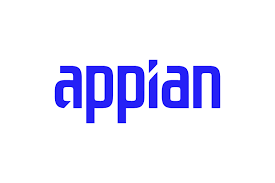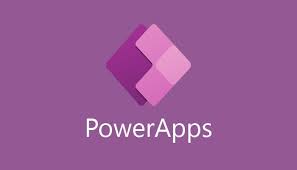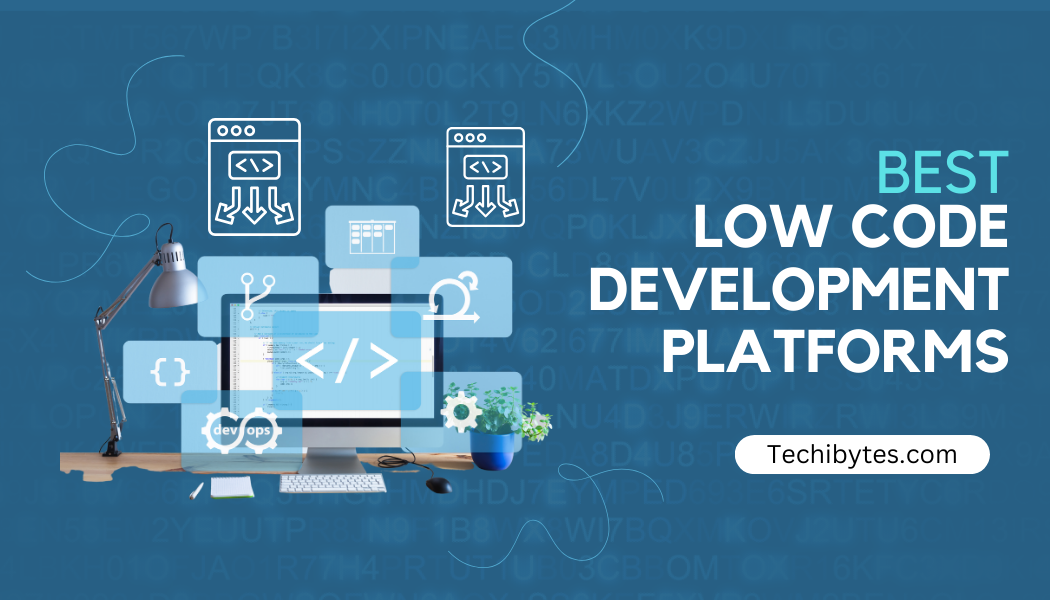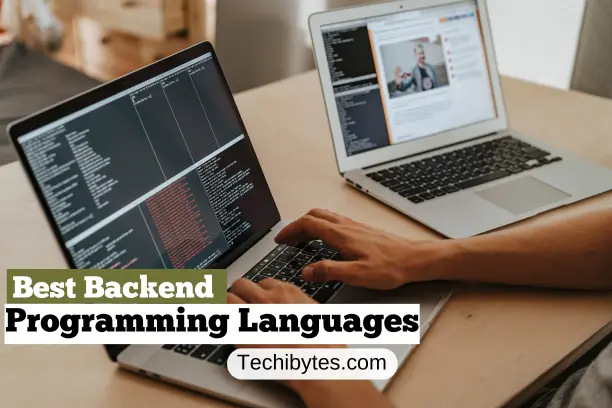Nowadays, organizations must be able to change course quickly and adjust to a constantly evolving workplace. You can make or break your long-term success based on how and how fast your business reacts to these changes.
Your firm has to adopt digital transformation quickly to fulfill the increasing demands of its customers and stay competitive as it becomes increasingly necessary.
Your company can execute this transformation in a variety of ways, and one strategy that is becoming more and more common is low code platforms, which enables organizations to adjust to conditions that are always changing.
Table of Contents
WHAT IS A LOW CODE DEVELOPMENT?
Low code is a visual method of developing software that requires less hand-coding and allows for faster application delivery.
A low code platform’s drag-and-drop functionality and graphical user interface automate certain parts of the development process, doing away with the need for conventional computer programming techniques.
Low code platforms make app development easier for non-coders, like project managers or business analysts.
These tools empower non-technical staff to have more influence in business by managing shadow IT, clearing IT backlogs, and gaining control over business process management workstreams. Having said that, experienced programmers can also benefit from low code development platforms.
BEST LOW CODE DEVELOPMENT PLATFORMS
The best low code development platforms are:
1. APPIAN

The low code platform, Appian, comes with native deployment tools and options for integrating with Jenkins and other DevOps tools.
Appian is a platform that lets users create business process management (BPM) apps for companies of all sizes. BPM software essentially aids companies in streamlining and streamlining business operations.
The intelligent automation platform from Appian will assist businesses in creating intelligent apps that boost revenue, customer satisfaction, and employee productivity.
Low code development and intelligent automation are combined in the Appian low-code development platform.
KEY FEATURES OF APPIAN
- With the help of pre-built components and visual interfaces, users may construct apps with Appian’s low-code development environment, which eliminates the need for complex coding.
- Appian’s core competency is process automation, which simplifies the design, implementation, and administration of intricate workflows and business processes. Features like work delegation, process monitoring, and process modeling are included in this.
- To facilitate the development of online and mobile applications, Appian offers a visual application designer. It offers a large selection of UI components and templates for creating user-friendly interfaces.
- Appian facilitates integration with a range of other systems and data sources. This implies that you can link your apps to internal databases, legacy systems, and other tools in your company.
2. KISSFLOW
With the Kissflow low code platform, businesses and organizations can automate workflows, optimize business processes, and develop unique apps with little to no coding knowledge.
Kissflow is a well-known low-code BPM platform. Because of its reputation for user-friendliness, Kissflow is a fantastic option for companies and groups looking to include non-technical employees in workflow and application development.
Before committing to a membership, you can test out the platform for free to see if it meets your unique needs.
KEY FEATURES OF KISSFLOW
- You can automate several business activities using Kissflow, including purchase orders, HR onboarding, approval workflows, and more. Workflows can be designed, implemented, and maintained without requiring a lot of coding.
- To gather and evaluate data, users can design unique forms and reports. Text, numbers, dates, and attachments are just a few of the data kinds that may be entered into the form builder’s easy interface.
- With Kissflow, you can link your workflows to your existing tools and services.
- You can create unique apps that are suited to your company’s requirements. These programs can be used for a variety of tasks, including project management, cost tracking, and customer service.
3. POWERAPPS

A simple and quick way to create unique business apps is with Microsoft Power Apps. The low code platform is remarkable, especially as it includes pre-built artificial intelligence components. With more than 200 interfaces to combine heterogeneous data and systems, extensibility is another enticing aspect.
Through PowerApps, Microsoft offers a framework for low-code programming. With PowerApps, you may create apps with a somewhat complicated user interface. It has many features. It contains functions including workflow automation, cloud-based service integration, app sharing, app running, etc.
KEY FEATURES OF POWERAPPS
- The point-and-click method of creating apps.
- It has already created templates.
- Data and application connection made simple.
- It will enable you to create online applications that work on Windows, iOS, and Android smartphones.
4. QUIXY
Businesses can enable their business users to automate workflows and construct simple to complex enterprise-grade applications for their unique needs up to ten times faster with Quixy’s cloud-based, no-code platform.
Quixy makes business more creative, productive, and transparent by assisting in the elimination of manual processes and accelerating the conversion of ideas into applications. In only a few minutes, users can start from scratch or modify pre-built programs from the Quixy app store.
KEY FEATURES OF QUIXY
- With the ability to drag and drop over forty form fields—such as rich text editor, e-signature, QR-Code scanner, and facial recognition—you may customize the application’s UI to your want.
- Using an intuitive visual builder, you can model any process and create basic or sophisticated workflows that are sequential, parallel, or conditional. Set up escalations, reminders, and notifications at every stage of the workflow.
- Utilize Webhooks, API Integrations, and ready-to-use connectors to seamlessly interface with third-party apps.
- With only one click, deploy apps and make modifications whenever necessary, without any downtime. the ability to utilize it offline on any device and with any browser.
- Real-time actionable reports along with dashboards that offer scheduled, multi-format data export and multi-channel, multi-channel, automated report delivery.
5. FEATHERY
For product teams, Feathery is one of the most effective low code platforms. With the help of this tool, product teams can create forms and in-app workflows for user signup, applications, payments, and more without using developer resources.
By using a visual editor like Webflow, a logic builder, and over 5,000 integrations, with programs like Segment, Stripe, and Firebase, users can create forms that are fully configurable.
KEY FEATURES OF FEATHERY
- You can use Feathery AI to quickly create any kind of form. After that, use the Feathery editor to customize and publish your form.
- With Feathery’s user-friendly editor, you can create any type of visual layout that can be written in code.
- Custom validation rules, robust field calculations, and conditional flow navigation.
- Configure most CSS properties, validation rules, and granular field behavior.
- Configure elements, styles, and more that are reusable. Fit your shape and your app together seamlessly.
- Connect your form, either natively or through Zapier, to your CRM, analytics, and other systems.
- Strong developer SDK for optimal access to embedded form control.
6. PIXPA

Anyone can construct a responsive website in a matter of minutes with Pixpa’s user-friendly low code platform. To use this platform and complete some tasks, you do not need to know how to code.
You’re covered by the extensive library of pre-made templates and a ton of useful features. With the platform’s drag-and-drop interface, you can easily customize your website to your liking.
You receive a ton of tools to develop whatever kind of website you want to launch, from blog sites to online storefronts. You are free to try out over 150 different templates. Additionally, the first 15 days of using this platform to create a website are free.
KEY FEATURES OF PIXPA
- A single, user-friendly visual builder with over 150 pre-made website templates
- Connect with over 100 applications
- 24-hour email and live chat assistance
7. RETOOL
The quickest method for creating internal tools is to by using this low code platform. It has applications with a visual style that communicates with any database or API and if you want to alter the appearance and functionality of your apps, you can switch to code almost anywhere.
You can launch more apps and advance your company faster using Retool. To solve internal procedures, thousands of teams at organizations like Amazon, DoorDash, Peloton, and Brex work together around specially designed Retool apps.
KEY FEATURES OF RETOOL
- There are self-hosted and cloud solutions.
- Build front ends quickly with more than fifty drag-and-drop components.
- integration with many well-known data sources.
- Make a connection to anything using a Graph ql or REST API.
- Put JavaScript anywhere to fully customize your application.
- Safe applications with SAML SSO, 2FA, audit logs, and fine-grained access controls.
8. FILEMAKER
FileMaker is another great low code platform for developing applications. You may create an app for any task with it. They can set it up in the cloud or on-site. It may be accessed via Web browsers and utilized on PCs, iPads, and iPhones. Any kind of business can utilize it to make custom apps. It is an adaptable app development solution.
KEY FEATURES OF FILEMAKER
- The created application will work on desktops, smartphones, the web, and cloud storage.
- Its user interface is simplified.
- Custom menus are copyable and persuadable.
- Multiple email attachments are supported.
9. MENDIX

Mendix offers an application development platform. Any gadget can have its applications developed with it. It can be deployed on-site or in the public or private cloud. Additionally, it offers horizontal scaling with the Enterprise edition and automated backups.
By using this low code platform, users hae access to tools for developing, testing and launching apps. The platform is based on the development methodology known as “model-driven engineering,” or MDE, which prioritizes abstract modeling.
KEY FEATURES OF MENDIX
- It is an agile way of handling projects.
- There are tools for visual modeling.
- Mendix has reusable parts.
10. STUDIO CREATIO
With Studio Creatio’s composable architecture and low-code/no-code platform, customers can build robust business apps in a matter of hours or minutes as opposed to weeks.
Even users without extensive technical knowledge can effectively construct business apps, automated processes, ML/AI-powered models for data-backed decision-making, and business rules because of its emphasis on drag-and-drop development tools.
KEY FEATURES OF STUDIO CREATIO
- With just a few clicks, Application Hub enables the creation of applications.
- To develop and edit data models, processes, integrations, and pages and views, use the No-Code Designer.
- To speed up the design process, Freedom UI Designer has a library of preconfigured views, widgets, and templates.
- Workflow Automation: Make use of industry-leading workflow automation features to manage and optimize your structured and fluid operations.
- Create large-scale mobile apps with ease
HOW AI CONTRIBUTES TO LOW-CODE APPLICATIONS
Low code and AI are convergent in many ways, and they may live together peacefully. Consequently, AI has contributed to low-code applications through the following ways:
1. BY GeneratING code recommendations
AI-assisted code development (AICD) is where the benefits of low-code programming and artificial intelligence are most noticeable. When natural language prompts, such as questions, assertions, or directions, are given to AI models, LLMs can understand and interpret human language.
Because AI can recommend codes in real-time, low-code makes web creation simple even for non-IT specialists. When a user begins to type a function call, for example, the AI can anticipate and recommend the functions that are accessible, together with their parameters and possible uses.
2. Debugging and error detection
AI actively detects problems and provides insightful feedback, making it a useful tool for debugging processes. It is not limited to just pointing out syntax problems.
AI can confirm adherence to best practices for coding and suggest performance-boosting modifications. Proactive assistance streamlines the coding procedure, leading to well-organized and efficient codebases.
3. Create apps with AI capabilities
Advancements can be achieved, including speaking to apps, comprehending human language, and identifying photos, as low-code components become more AI-aware. For instance, by merely dragging and dropping an AI-enabled function, developers may easily design a chatbot that is capable of holding conversations.
LOW CODE, NO CODE
Low-code and no-code software development techniques aim to speed up the software development process by eliminating the intricacy linked with conventional development. Rather than creating software solutions by hand coding, both methods use visual programming and automation.
Low-code and no-code platforms offer a visual integrated development environment (IDE), pre-built components, templates, and seamless integration capabilities to expedite the creation of applications. But those are the only parallels.
If you liked this article, then please subscribe to our YouTube Channel for videos relating to this article. You can also find us on Twitter and Facebook.
FREQUENTLY ASKED QUESTIONS
What qualifications are necessary for low code development?
You need familiarity with agile development, database management, and analytical thinking to become an effective low-code developer. These abilities will enable you to contribute productively in a low-code development setting.
What effects do low code development platforms have on the process of software engineering?
Any company may become more agile and productive with low-code development. It lets you create and launch new apps quickly and simply without needing a lot of technical knowledge. This can help businesses become more adaptable and responsive to shifting business needs.
What is a low code platform?
Low-code software development is a technique that builds processes and apps with little to no coding. employing visual interfaces with simple logic and drag-and-drop functionality in a low-code development environment can be an alternative to employing sophisticated programming languages.
CONCLUSION
In conclusion, the necessity for quicker, more effective software development as well as a desire to democratize the software creation process have led to the emergence of low code platforms.
REFERENCES
- softwaretestinghelp.com
- trio.dev
RECOMMENDATIONS
AI-Driven Low Code Development
10 Best App Development Cost Calculators
Top 21 Software Development Companies in New York City










